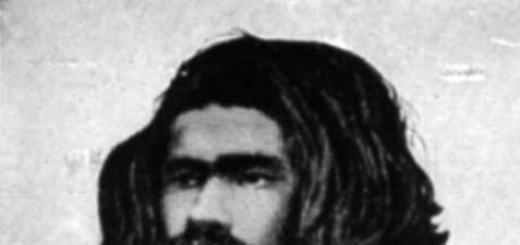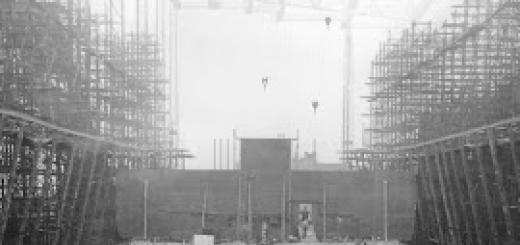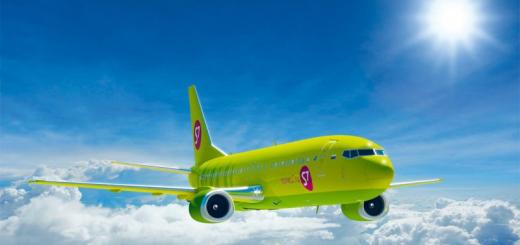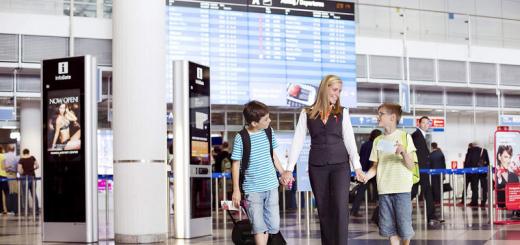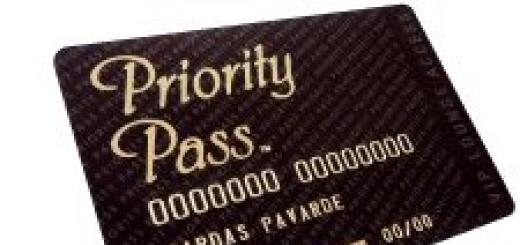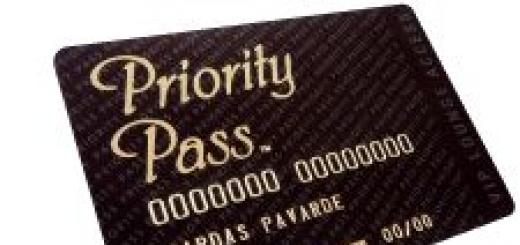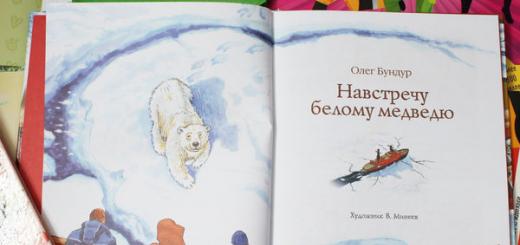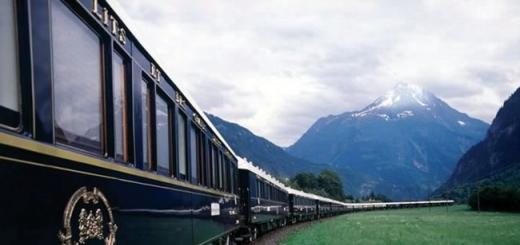Charles Bridge in Prague is a visiting card of the Czech capital and a very atmospheric place, saturated with the spirit of antiquity. Here you can admire beautiful views cities, look at sculptures and make wishes. Since 1992, the Charles Bridge has been an object world heritage UNESCO.
History of Charles Bridge
The destruction of the Judith Bridge by a flood in 1342 stimulated the construction in 1357 of a more modern crossing over the Vltava. Master Otto was the first architect of the new bridge. In what exact year construction was completed is unknown, but the funeral procession carrying the remains of Charles IV in 1378 passed over the already installed bridge.
Parameters The Charles Bridge were stunning in their time and are awe-inspiring even today:
- length - 520 meters;
- width - 9.5 meters;
- height - 13 meters above the river.
Over the centuries, floods have destroyed the bridge many times. Ancient monuments miraculously survived and the building looks almost the same as six and a half centuries ago. After a catastrophic flood in 1890, extensive reconstruction was carried out.

Work was carried out in 2004-2005 to preserve the two pillars, and in 2007 the complete reconstruction of the Charles Bridge was carried out again, this should eliminate some of the adverse effects of past floods.
Building Legends
According to legend, in those distant times, figures were given great importance. Therefore, before starting the construction of the bridge, Charles IV turned to astrologers for advice. And on their recommendation, the first stone of the crossing was laid by the emperor himself on July 9, 1357 at 5.31 am. If you write the numbers in the following sequence: year, day, month and time, then you get 135797531 - a number that reads the same in both directions, or as it is also called - a "palindrome". According to legend, only thanks to the right date, the bridge stood for centuries and will stand for the same amount more.
There is another explanation for the strength of the bridge: to improve the solution, raw eggs, milk and wine were added to it, and products were collected throughout the country. Many funny fables are associated with this legend, some of them are:
- The inhabitants of one village wanted to please the emperor so much that they boiled eggs so that they would not break.
- From one small town, people sent not only milk, but also cottage cheese and hard cheese. Thus they wanted to curry favor with Charles IV.

Sculptures and towers on the Charles Bridge
It is not for nothing that Charles Bridge is considered the main architectural landmark of Prague, because it is decorated with a free gallery under open sky. There are 30 sculptures on the bridge, and each of them has its own history, which is intertwined with the history of the Czech Republic. Most of the statues were created in the 17th-18th centuries by Czech sculptors: Matthias Bernard Braun, Jan Brokoff and Ferdinand Maximilian. Almost all sculptures depict Czech saints and are made of baroque stone. To date, the bridge is mostly replicas of the statues, and the originals are stored in the National Museum.

The statue of John of Nepomuk is the oldest and only bronze sculpture; it has been on the bridge since 1683. According to legend, Jan was thrown off a bridge in 1393 for not revealing his wife's confession to King Wenceslas IV.
The most famous sculptural groups:
- "The Turk who guards the Christians in captivity" is a work by Jan Brokoff from 1714.
- The Crucifix is the oldest group, brought from Dresden in 1657.
- "Virgin Mary with Child and Saint Anna" - the work of the sculptor Matej Vaclav Jakel from 1707.

The towers at both ends of the Charles Bridge were its only decorations until the middle of the 17th century. The eastern tower is located at the entrance from the bridge in Stare Mesto and is called Staromestskaya. Its construction was supervised by the architect Peter Parler from 1357 to 1380. The East Tower is the most beautiful building of the 14th century in Europe, its height is 47 meters above the level of the bridge. The Old Town Tower is decorated with the coats of arms of the Holy Roman Empire and figurines of St. Vitus, Charles IV, Wenceslas IV, St. Vojtech and Sigismund (the patrons of the Czech Republic), and pointed spiers complete the tower.

The western towers were built at the entrance from the bridge to Mala Strana and are called Lesser Town. These towers were built in different centuries: the construction of more than high tower ended in 1464 and the low tower was completed in 1591. By architectural style two western towers similar to the east tower.

The neo-Gothic staircase to the island of Kampa is part of architectural monument Charles Bridge, its construction was completed in 1844.

Making wishes near St. John of Nepomuk
There are several places on the Charles Bridge where you can make a wish. Every day, crowds of tourists gather near the statue of St. John of Nepomuk (John Nepomuk), a Czech Catholic martyr, in order to make a wish. Under the sculpture of the saint are 2 bas-reliefs:
- if you rub the bas-relief on the right, your wish will come true;
- if you guess a person and rub the bas-relief on the left, friendship with the hidden person will be strengthened.
Tourists rubbed the "magic places" on the bas-reliefs to a shine, so finding the right place is not difficult.

For a wish to come true, it must be intangible.
One more wish can be made at the very place from which St. John of Nepomuk was thrown into the river. There is a belief that when the body sank under water, 5 stars shone over the Vltava, and since that time St. John of Nepomuk has been depicted with 5 stars above his head. The bronze figurine of the martyr is located in the middle of the bridge on a pedestal; when making a wish, the fingers of the right hand must be placed on the stars, and the left hand on the feet of the saint or on the copper cross.

Charles Bridge has been a pedestrian bridge since 1974. It immediately became a favorite place for tourists, as well as a concentration of street musicians, dancers, artists, antiques and souvenir dealers. Walking along the bridge, you can meet more than one jazz band.

Where is it located and how to get there
The address: Karlův most, 110 00 Praha 1, Czech Republic.
The Charles Bridge is located in historical center Prague is close to popular attractions like the Powder Tower, Prague Castle, and Klementinum. Within walking distance from the bridge there are a variety of accommodation options, ranging from inexpensive hostels to 5-star ones.
How to get there
Metro(nearest stations line "A"):
- Staroměstska (right bank of the Vltava);
- Malostranska (left bank of the Vltava).
By bus: No. 194, No. 207 - to the Stare Mesto stop.
By tram:
- to the Staroměstska stop: No. 1, No. 2, No. 17, No. 18, No. 25, No. 93;
- to stop Malostranska: No. 1, No. 2, No. 12, No. 15, No. 18, No. 20, No. 22, No. 23, No. 25, No. 97.
Distance from Wenceslas Square Charles Bridge is only 1 km away and can be reached on foot, heading first along Melantrichova street and then along Karlova street.
Charles bridge on the map of Prague
Charles Bridge in Prague is a visiting card of the Czech capital and a very atmospheric place, saturated with the spirit of antiquity. Here you can admire beautiful views of the city, look at sculptures and make wishes. Since 1992, the Charles Bridge has been a UNESCO World Heritage Site.
History of Charles Bridge
The destruction of the Judith Bridge by a flood in 1342 became an impetus for the construction..." />
Charles Bridge is the most famous attraction not only in Prague, but throughout the Czech Republic. Today tourists love it and photographers adore it, and in past centuries it played a huge role in the life of the Czech capital.
During its long history, the bridge has witnessed many triumphs and falls, magnificent celebrations and cruel executions, has become a battlefield several times, but has always remained a reliable support for the townspeople, no matter what passions rage around.
Of course, such a vivid history could not pass without a trace, so the Charles Bridge is literally covered with numerous legends.
The bridge links the two most important districts of old Prague - Stare Mesto and Lesser Town. In the 12th century, in its place, there was an ancient Judith Bridge, named after the beautiful Queen Judith of Thuringia, wife of Vladislav II. However, a couple of centuries later, this bridge was destroyed by a flood, and only one tower from the Lesser Town side, miraculously surviving, keeps its memory.
A new bridge across the Vltava was built in 1357 by order of Emperor Charles IV. It was later named after this monarch.
First legends
The bridge was built for quite a long time, more than half a century, and was completed only at the very beginning of the 15th century. It was erected by the famous architect, Petr Parlerzh, who was also involved in the construction of the capital cathedral St. Witt.
To make the structure more resistant to the vagaries of the often overflowing Vltava, egg white was mixed into the concrete solution. This trick has become the key to the high strength of the bridge, which for several centuries has successfully resisted all floods and does not need major repairs.

Charles Bridge is a majestic structure, 10 meters wide and 16 spans long. Such a grand construction for those times could not leave the townspeople indifferent, so mystical legends immediately began to be added about the construction of the bridge. Some of them may seem funny, but there are also creepy ones.
lucky date
Traditions say that Emperor Charles chose the date of laying the first stone with the active participation of astrologers. It is known that this significant event took place in 1357, on June 9, exactly at 5.31 am. This date is read the same way both from left to right and from right to left: 135797531, and therefore has a special energy. In addition, it was at this time that a small parade of planets happened - the Sun, Earth and Saturn lined up in one line.
According to astrologers, such a favorable combination of astrological "circumstances" should have brought good luck and prosperity to the future construction. And it cannot be said that the wise men were wrong.

sneezing baby
A rather gloomy legend tells of an unfortunate builder who was commissioned to create one of the spans of the bridge. The master still could not make an accurate calculation, and then one day, when he once again pored over the drawings, the devil appeared to him. The unclean one promised his help in exchange for the soul of the first one who will pass through the new span after its opening. The builder agreed, but he decided himself to be the first to let a black rooster across the bridge, because the question that the soul should be human was not even stipulated.
However, the devil was also not so simple, and at the end of the work, he lured the master's pregnant wife to the bridge, who decided to be the first to congratulate her husband. The next day, the woman died, the child also did not survive ...

Since then, passers-by have heard children's sneezing over the Vltava more than once. It was said that this ghost of an unborn baby was freezing on the bridge, and no one was able to help him.
Fortunately, this time the people were wrong. Once, a man in a hurry somewhere, hearing a sneeze, automatically wished the invisible man to be healthy. Surprisingly, the ghost immediately calmed down and never bothered anyone again.
Bridge Tower Legends
The Old Town Bridge Tower is recognized as one of the most beautiful Gothic buildings in all of Europe. It began to be built simultaneously with the bridge, and the rich decor was due to the fact that the tower, in addition to its protective functions, served as a kind of front gate through which ambassadors of other states entered Prague Castle.

But the tower did not always play the role of an impromptu triumphal arch. More than once she became the object of intimidation. So, after the suppression of one of the Prague popular uprisings, the heads of 12 of its instigators hung in iron nets for a whole decade on the upper gallery of the tower. According to legend, their souls still live here, and at night you can even hear their quiet whisper.
In memory of these unfortunates, 12 white crosses were inscribed right on the pavement of the Old Town Square, which can still be seen today.
The tower is open to the public, and the view from the 47-meter observation deck certainly deserves the attention of every guest of the Czech capital. And if you visit this observation deck On June 22, the setting sun, with its last ray, will accurately indicate the place where St. Vitus, a Christian martyr and one of the patrons of Prague, is buried.

There is another interesting belief. On the eastern wall of the Old Town Tower, among numerous coats of arms and statues, there are five images of kingfishers. Residents of Prague are sure that only a person with a pure and bright soul can find them. Many tourists enthusiastically accept the challenge, but most of them manage to find only four birds, only a few find the fifth ...

legendary statues
Initially, Charles Bridge was devoid of any decorations. 30 graceful statues and sculptural groups, which are now admired by tourists, appeared much later, in the 18th century. The material for all the sculptures was soft sandstone, so over time, under the influence of rains and winds, they lost their freshness and beauty. Now on the bridge there are copies of them, created from material that is more resistant to bad weather, while the originals are stored in the National Museum of Prague.

Statue of John of Nepomuk
The most legendary statue of Charles Bridge is the statue of St. John of Nepomuk.

This saint - the patron saint of Prague is very loved and revered by the townspeople. His appearance here is not accidental. After all, it was from here, from the bridge, that the holy martyr was thrown into the river. The reason for such a terrible execution was the anger of King Wenceslas IV that Jan, who at that time was the queen's confessor, greatly honored the secret of confession and refused to confirm the monarch's suspicions of betraying his wife.
Today, on the very spot where the saint was executed, there is a small marble tablet with a cross surrounded by five stars.

The statue of John of Nepomuk is resoundingly popular with guests of Prague. Thousands of people come to it every day, because, according to legend, the statue of the saint has the ability to grant wishes. To do this, it is enough, standing in front of the statue, to tell Jan about your dream, and then alternately touch the reliefs on the right and left sides of the pedestal.

bearded man
The only truly ancient sculptural image present on the bridge today is a bas-relief, popularly referred to as the Bearded Man. Presumably, it depicts one of the ancient builders and previously occupied a place above the third span of the Yuditin Bridge.

During the construction of a new crossing, they decided to move the miraculously preserved statue closer to the shore and decorated the stonework of the embankment with it. And so that Borodach does not get bored in a new place, he was assigned an important mission - to monitor the water level in the river. The bas-relief was deliberately set quite low, and now every resident of Prague knows that if the Bearded Man's beard gets wet, one should prepare for a flood.

Evil Charles Bridge
Despite the abundance of statues of saints, there are also evil spirits on the Charles Bridge, which, by the way, feel great and are not embarrassed by anyone. So, in rainy weather, you can see a small nimble imp on the railing of the bridge. His favorite pastime is to draw his own self-portraits, and then pester passers-by, hoping to profitably sell his art.

And under the fourth span lives a real merman, whose name is Pan Josef. He is considered the most important waterman in the Czech Republic and is highly respected not only by his subordinates, but also by the townspeople. In the old days, Pan Josef liked to go out to people, chat and smoke a pipe with them. It is said that several centuries ago he even owned a small boat station. However, in the modern world, mythological characters have a hard time, so Pan Josef prefers not to show himself once again, but continues to do his main job - to collect the souls of all the drowned in clay pots. And so that the waterman does not lack "containers", local potters still bring and leave their products under the bridge. After all, you never know when another misfortune will happen and a new soul will fall into the possession of Pan Josef.
The keeper
The Charles Bridge also has its own Guardian - the knight Bruncvik - a character as popular in the Czech Republic as Odysseus in Greece or Ivan Tsarevich in Russia.
The majestic statue of Bruncvik on a high pedestal is installed next to the bridge, on the very bank of the Vltava, from the Malaya Strana. The stone knight holds a Magic Sword in his hands, capable of chopping the heads of enemies without even touching them. However, according to legend, the real Bruncvik sword was walled up somewhere in the masonry of the Charles Bridge, and it is this relic, and not egg whites in cement, that the bridge owes its centuries-old strength.

The inhabitants of Prague believe that if the city is in real danger, Bruncvik will come to life again, step down from a high pedestal, wave his wonderful sword and instantly hit all enemies. True, in its history, Prague has experienced many enemy invasions, but Bruncvik has never come to the aid of the townspeople. Apparently, the enemy was not so strong and the knight felt that people could handle it themselves.
And even in 2002, when a catastrophic flood occurred in the Czech capital, and the water almost completely covered the Charles Bridge, the Bruncvik statue continued to proudly rise above the raging waves. He did not leave his post, and adequately withstood the pressure of the elements, which, by the way, did not cause much damage to the bridge.

Charles Bridge is the decoration and pride of Prague. It is crowded almost at any time of the day and, perhaps, due to the abundance of tourists, it is now difficult to notice a small imp on the railing or hear the sighs of executed rebels at the Old Town Tower. In order to better feel all the beauty, grandeur and mystical atmosphere, it is better to visit the bridge at night or early in the morning. At this time, there are much fewer tourists here and there is a chance that only St. John of Nepomuk will know about your innermost desire, and then it will certainly come true.

The Charles Bridge(Karlův most) - a bridge in Prague over the Vltava River, one of the most recognizable sights of Prague.
The construction of the Charles Bridge began in 1357. The first stone was laid during the construction of Charles IV, later the bridge was named after him.
History of the Charles Bridge in Prague
Charles Bridge - the most old bridge in Prague and those that connect the banks of the Vltava River - was built on the site of the Judith Bridge, destroyed in 1342 as a result of a flood. The idea belonged to King Charles IV, which is why the bridge is called Charles Bridge. Construction began in 1357 and was completed only at the beginning of the 15th century under the guidance of the famous Czech architect Petr Parlezh. He also erected and decorated with sculptures the bridge tower from the side of the old city.
There is a legend that the time for the beginning of the construction of the bridge was chosen by astrologers. Historian Zdenek Gorski states that the first stone was laid by Charles IV himself on July 9, 1357 at 5:31 am. If you write out the numbers of the selected date in a row, you get a palindrome: 1 3 5 7 (year) 9 (day) 7 (month) 5 3 1 (time). Then the magic of numbers played an important role in making any decisions. Starting construction at this very moment predicted that the Charles Bridge would survive for many centuries.
According to the legend, the famous Catholic martyr and Saint John of Pomuk was thrown into the river from the Charles Bridge. When the body of the priest in the bag disappeared under the water, eyewitnesses noticed the twinkling of 5 stars in the same place. Therefore, since then, the image of John of Nepomuk has always been depicted with 5 stars above his head. The place where this happened can be recognized by the cross attached with copper nails directly to the railing.
For a long period of time, the kings used the bridge to pass from the Krolevsky yard to the Castle. And from ordinary people they demanded a fee for the passage.
Since 1974, the Charles Bridge in Prague has become completely pedestrian.
In September 1890, a terrible flood occurred in Prague, which caused severe damage to the Charles Bridge. A lot of debris got stuck in the spans, trees blown away by water, and a dam appeared. Under the influence of pressure, some of the bridge piers collapsed. It took two years to eliminate all the consequences and damage caused by the elements. The bridge was closed for a long time, it was opened on November 19, 1892.
Until 1908, a city horse-drawn railway passed through the bridge, and since 1883, an electric tram. But after a while, worrying about the safety of the bridge, it was banned.
Sculptures on the Charles Bridge

There are 30 sculptures on the bridge, which were made at different times. List of sculptures on the Charles Bridge:
- Saint Ivo (1711, M. B. Brown);
- Madonna with Saint Bernard (1708 - 1709, M.V. Jakel);
- Saints Barbara, Margarita and Elizabeth (1707, F. M. Brokoff);
- Madonna with Saint Dominic and Thomas Aquinas (1708, M. V. Jakel);
- Pieta (1859, J. Max);
- Crucifixion - the very first sculpture, installed in 1629, (H. Hillinger);
- Saint Joseph (1854, J. Max);
- Saint Anna (1707, M. V. Yakel);
- St. Francis Xavier (1711, F. M. Brokoff);
- Saints Cyril and Methodius (1928, K. Dvorak);
- Saint Christopher (1857, E. Max);
- Saint John the Baptist (1857, J. Max);
- St. Francis Borgia (1710, F. M. Brokoff);
- Saints Norbert, Wenceslas and Sigismund (1853, J. Max);
- Saint Ludmila (1720, M. B. Brown);
- Saint John of Nepomuk (1683, J. Brokoff);
- Saint Francis of Assisi (1855, E Max);
- Saint Anthony of Padua (1707, J. O. Mayer);
- Saint Vincent of Ferrara and Saint Procopius (1712, F. M. Brokoff);
- Holy Apostle Jude Thaddeus (1708, J. O. Mayer);
- St. Nicholas of Tolentia (1708, I. Kol);
- Saint Augusti8 (1709, I. Kohl);
- Saint Lutgarde (1710, M. W. Brown);
- Saint Cajetan (1709, F. M. Brokoff);
- St. Vojtech (1709, J. M. Brokoff);
- Saint Philip of Benicki (1714, M. B. Mandl);
- Saints Jean de Mata, Felix de Valois and Ivan the Czech (1714, F. M. Brokoff);
- Saint Vitus (1714, m. B. Mandl);
- Saint Wenceslas (1859, J.K. Bem);
- Christ the Savior with Saints Cosmas and Damian (1709, J. O. Mayer).
Currently, 28 of the 31st statues are installed on the bridge - exact copies of the originals, which in the 20th century were transferred to National Museum. This is because the sculptures were made of short-lived sandstone and were destroyed.
Near one of the pillars from the bridge there is also a sculpture of Brunswick - the work of an unidentified sculptor from the early 16th century.
Towers of Charles Bridge

Towers are installed on both sides of the Charles Bridge:
- (height 47 meters) - built in the Gothic style according to the project of Peter Parler in the middle of the 14th century and was conceived as a triumphal arch for crowned kings;
- Lesser Town bridge towers- these are two towers of different height and style, built at the beginning of the 15th century on the site of an old Romanesque tower;
Make a wish on the Charles Bridge
There are two places on the bridge where tourists make wishes:
- near the statue of John of Nepomuk;
- near the grate with the image of Jan, where, according to legend, he was thrown into the Vltava.
Remember that the desire must be real and fulfillable.
Where is Charles Bridge located?
Charles Bridge is located in the center of Prague - the capital of the Czech Republic and connects the areas of Malaya Strana and Stare Mesto.
How to get to the Bridge?
Near the Charles Bridge are tram stops:
- Karlovy lázně - trams No. 2, 17, 18, 53. (Stare Mesto)
- Staroměstská - trams No. 2, 17, 18, 53. (Stare Mesto)
- Malostranské náměstí - trams No. 1, 12, 15, 20, 22, 25, 57. (Mala Strana)
Or take metro line A to the Staroměstská or Malostranská station.
In Prague, all roads lead to the Charles Bridge. No matter how a tourist wanders around the old town, he will inevitably end up on the banks of the Vltava near the most famous landmark of the Czech capital. You can admire the bridge both during the day and in the evening - it is beautiful in any weather.
At this place, as history testifies, bridges were built in the 12th century. In 1172, the Judith Bridge was built. It received its name in honor of Queen Jutta of Thuringia, the wife of Vladislav II, but in 1342 the flood washed away this structure. The Roman Emperor and King of the Czech Republic Charles IV, according to legend, was a superstitious man. He calculated the date of laying the bridge together with astrologers. As a result, a date was chosen that read equally on both sides. The foundation stone of the bridge was laid in 1357 on the ninth day of the seventh month at five thirty-one minutes - 135797531. Such a palindrome turned out. The architect was Petr Parler, he was then 22 years old. And he lived to see the commissioning of his offspring, although the bridge was built for 50 years.

For several centuries, the bridge that connects the historical districts of Mala Strana and Stare Mesto was called Prague. It received its current name in 1870. The building is 520 meters long and 9.5 meters wide.

The main decoration of the bridge, sculptures, began to be installed from 1683 to 1714. Basically, on the bridge are the works of sculptors Matthias B. Braun, Jan Brokofom and his sons. There are 30 monuments on the Charles Bridge: however, today there are copies here, at the beginning of the 20th century the originals were transferred to the Prague Museum.
I must say that it is not so easy to look at the sculptures on the Charles Bridge, tourists are never transferred there. In addition, sellers of paintings and souvenirs, as well as musicians, are still located on the not so wide pedestrian part.

And, nevertheless, it is necessary to devote at least a couple of minutes to each sculpture. So, let's walk along the right and left sides of the bridge. If you are walking from the old town towards the Prague Castle, then the first sculpture on the right will be Madonna with Saint Bernard (1709). The sculptor combined in one composition the Virgin Mary and Bernard of Clairvaux, the founder of the Cistercian order, whose monks supported the cult of the Virgin.

Madonna with Saint Dominic and Saint Thomas Aquinas (1708)
Baroque sculpture depicting the Virgin Mary with baby Jesus hovering above the globe, and thereby symbolizes how widespread Catholicism is. The Madonna passes the rosary to Saint Dominic, Thomas Aquinas has a Bible in his hand.

crucifixion of christ
This sculpture was erected on the bridge for half a century - from 1657 to 1707. In the center is Jesus crucified on the cross, on the left is the Virgin Mary, on the right is John the Evangelist. The cross has an inscription in gold. According to legend, the letters are made of gold, the money for them was seized in the form of a fine from a Jew.

Saint Anna (1707)
Statue of Saint Anna, mother of the Virgin. The current copy was made by Czech sculptors Vojtech Adamec and Martin Pokorny and installed on the bridge in 1999.

Cyril and Methodius (1928-1938)
This is the only sculpture for which the state has forked out, and it is the “youngest” on the bridge. The statue was commissioned by Karl Dvořek in 1928 for the anniversary of the Republic. Previously, there was a sculpture of St. Ignatius of Loyla on this site, but it was washed away by a flood in 1890.

John the Baptist (1855)
The sculpture of John the Baptist was created by master Josef Max. This place was previously occupied by a statue of the same saint Michal Jan Josef Brokoff. It has already fallen into disrepair and is now in the museum. The cross behind the statue marks the place from where John of Nepomuk was thrown into the Vltava. Queues line up for him: according to legend, here everyone can turn to this saint for help. And, according to the people of Prague, Jan Nepomuk will certainly help.

Norbert, Sigismund and Wenceslas (1853)
In the first version, created by Jan Brokoff in 1708, Saint Norbert was depicted together with Saints Andrian and James. In 1764, the decaying figures were replaced by a work by Platzer, where angels stood next to Norbert.

Saint John of Nepomuk (1683)
According to legend, John of Nepomuk refused to reveal the secret of his wife's confession to the king, and for this disobedience he was thrown off the bridge into the river. There are bronze images on the pedestal of the sculpture, which are rubbed hard by tourists, making wishes.

Anthony of Padua (1707)
The statue of St. Anthony of Padua is one of the first works of Jan Mayer. The sponsor was the Burgrave of Prague K.M. Wittauer.

Judas Thaddeus with a club (1708)
Saint Jude Thaddeus is one of the original twelve apostles.

Blessed Augustine trampling heretical books ( 1678)
The sculpture of Blessed Augustine was sculpted by John Frederick Kohl.

Kajetan (1709)
The master's work is dedicated to Saint Cajetan - the defender from the plague. The obelisk, shrouded in clouds of stone, resembles the Plague Pillars, which are very common in Prague and in the Czech Republic in general.

Philip Benicius (1714)
The only light sculpture of the Charles Bridge. Philip Benicius was the founder of the Servite order. For the manufacture of the statue, white Austrian marble was used: it was sculpted in Austria, and then brought to Prague.

Sculpture of Saint Vitus (1714)
Saint Vitus is surrounded by lions who protect their captive.

Saints Cosmas, Damian and Jesus Christ (1709)
The sculptural group was installed at the expense of the Medical Faculty of Charles University.

Saint Ivo in the company of Themis (1711)
The composition depicts a trial at which Saint Ivo, together with Themis, resolves a dispute between his son and mother.

Barbara, Margarita and Elizabeth (1707)
Saint Barbara is the patroness of miners and miners, people associated with mining; Saint Elizabeth - the protector of the sick and the poor, the patroness of bakers; Saint Margaret was considered an assistant in childbirth and patronized the harvest.

Pieta (1859)
The Descent from the Cross is one of the most famous sculptures of the Charles Bridge. Initially, there was a wooden crucifix in this place, and even earlier, according to legend, bakers and artisans were executed - they were chained in cages and lowered into the water. In 1496, a flood destroyed part of the bridge and washed away the crucifix. The first Pieta was made in 1695 by Jan Brokoff. Modern Pieta Emanuel Max created in 1858 with money collected as donations and with funds from the city treasury.

Saint Joseph and little Jesus (1854)
The sculpture depicts the righteous Joseph the Betrothed, who supports the little Jesus Christ, who blesses the city.

Francis Xavier (1711)
The very first statue of Francis Xavier was washed off the bridge by a flood in 1890. The sculpture symbolizes the conversion of Asian peoples to Christianity. It is believed that the sculptor Brokoff sculpted himself in the figure of a man standing next to the saint.

Christopher with baby Jesus on his shoulders (1857)
There used to be a guard post on this site, but it was washed away by a flood in 1784. At the same time, five guards in it died, and the booth was not returned to its original place. In its place, a statue of St. Christopher was erected, with Jesus on his shoulders. Saint Christopher is considered the patron saint of sailors, travelers and wanderers.

Francisco Borgia (1710)
Saint Francisco Borgia is depicted between two angels dressed as a priest. The angels are holding holy images in their hands, the first is the image of the Mother of God, the second is the image of the Holy Gifts.

Site photo ic.pics.livejournal.com
Saint Ludmila with little Wenceslas (1720)
Saint Ludmila is a Czech princess, she has a little grandson Wenceslas in her arms.

Francis of Assisi (1855)
The sculptural group of three figures headed by Francis of Assisi was installed at the expense of the President of the Royal Scientific Society of the Czech Republic, Count Franz Kolowrat-Libstein.

Saints Vincent Ferrer and Procopius of Sasau (1712)
Saints Vincent Ferrer and Procopius of Sazava cast the demons to the ground and trample them underfoot. The bas-relief on the pedestal depicts a Turk, a Jew and a devil, who are also under the heel of the saints.

Site photo ourtravelpics.com
Bruncvik (1884)
According to legend, the Praguer Bruncvik went on a journey to find a lion for his coat of arms. He not only saved the lion's life, but also acquired a magic sword with which he fought enemies. According to legend, the sword was immured in the base of the Charles Bridge. It is believed that Bruncvik will definitely come to the rescue and protect the Czech people from the enemy. The statue does not stand on the bridge, but on a separate support on the south side of the structure. The Russian poetess Marina Tsvetaeva dedicated the lines to Bruncvik: “I have a friend in Prague, a stone knight ... He stands on the bridge and guards the river ... He is about five hundred years old and he is very young: a stone boy.”

Nikolai Tolentinsky (1708)
Since 1708, St. Nicholas of Tolentinsky has been protecting the Charles Bridge from the rampage of the “wild river” of the Vltava. An angel holds a bowl with bread that can heal the sick and save from misfortunes. In 1969, the statue was replaced with a copy.

Vision of Saint Luitgarda (1710)
The sculpture tells the legend of the dying vision of the nun Luitgarda. In a dream, Jesus Christ appeared to her, crucified on the cross. He bent over the blind nun so that she could heal his wounds with her kiss. The original was replaced with a copy in 1995.

Adalbert of Prague (1709)
Praguers several times expelled Adalbert, who demanded too strict observance of church canons. Calling for mercy, preaching humility, he was brutally murdered. According to legend, at the moment of death, the ropes that bound him were untied, and the body took the form of a cross and radiance emanated from it. To redeem the body, it was decided to pay in gold for its weight. But it turned out to be weightless, and was transferred without ransom. So the saint returned to his native city.

Saint John de Mata, Saint Felix de Valois and John of Bohemia (1714)
The most popular sculptural group of the Charles Bridge. It depicts the hermit John of Bohemia, accompanied by the French saints John de Mata and Felix de Valois, who in 1199 founded the monastic order of the Trinitarian to ransom captive Christians from the Gentiles. The pedestal is a cave where captive Christians beg for mercy. They are guarded by a Turk and a dog.

Saint Wenceslas (1859)
Wenceslas I is the most revered prince of the Czechs.

Again, all the roads of the old town lead to the Charles Bridge. But you can also drive up to it. public transport. Near the Charles Bridge there are three tram stops: Karlovy lázně and Staroměstská - routes No. 2, 17, 18, 93. (Stare Mesto, right bank); Malostranské náměstí - routes No. 1, 12, 15, 20, 22, 25, 97. (Mala Strana, left bank).
There are metro stations not far from the bridge: Staroměstská (line A) on one side of the river, and Malostranská (line A) on the other side.

Among the must-see places in Prague, one of the main ones is the Charles Bridge. To visit Prague and not walk along it is the same as to visit Moscow and not go to Red Square, in Paris - not to see the Eiffel Tower, in London - to ignore Big Ben, and in New York - the Statue of Liberty.
Charles Bridge is really a visiting card of Prague and one of the most legendary and visited places. And how many legends about it are composed, how many stories happened on it, how much everything is connected with it - it's impossible to retell it all. The bridge acquired its modern look in the 17th century, it was then that its famous statues appeared here, without which it is difficult to imagine its appearance today. By the way, the bridge was named after Emperor Charles only in the 18th century, and before that it was called Prague.

Charles Bridge connects the most important tourist sites in Prague - Prague Castle and Stare Mesto, and is itself a key tourist attraction. It was built next to the place where the ford used to be, people crossed it locals even before there was a bridge, and even a city. According to one version, the name "prague" comes from the word "prag" - a threshold, since there were fords on the thresholds of the Vltava, through which local peasants not only crossed themselves, but also translated travelers. One of these rapids is a ford and is now visible from the Charles Bridge.

When Prague grew into a strong fortified city in the Middle Ages, a bridge was needed. Originally built here wooden bridge, but after a century and a half, the first stone bridge appeared in its place, which had beautiful name- Judith (Judith or Judith - that was the name of the Czech queen, the wife of King Vladislav). It is today that there are 18 bridges in Prague, and in the early Middle Ages, the Judith Bridge was the only one of great strategic importance. Therefore, when it was demolished as a result of a flood, Emperor Karl (he is also the most famous Czech king, he is also the emperor of the Holy Roman Empire of the German nation) was seriously puzzled by the construction of a new bridge. According to Karl's idea, this bridge was supposed to stand for centuries, so he turned to magicians and astrologers, who advised him to pay attention to the magic triangle - a digital palindrome, on which only odd numbers from 1 to 9 are located in direct and reverse order. Accordingly, the construction date is 1357, 9 days, 7 months (July), 5 hours, 31 minutes.

Karl was very superstitious and waited for the right date for several years, and now, at the indicated time, he personally laid the first stone in the support of the new bridge. The young architect Petr Parler was invited to build the bridge. In many ways, it was through his efforts that Prague acquired its unique look, because he built St. Vitus Cathedral, the Old Town Tower (the gate of Charles Bridge) and many other beautiful architectural monuments that have survived to this day.
They say that the construction took on a simply national scale: for especially strong cement, raw eggs were added to it. From every city, every village, every peasant household pulled carts loaded with baskets of eggs. A small historical anecdote is connected with this: the inhabitants of the city of Velvara, worried that the eggs might break on the road, decided to ... boil them. What was the surprise of the builders when they found boiled eggs. Since then, for a long time, the whole of Prague and the Czech Republic laughed at the Velvartsy.

According to legend, the construction was not without the help of evil spirits. In order to build a bridge, Parlerge turned to the devil himself for help, he promised to help, but requested high price- the soul of the one who first to pass over the completed bridge. Several years passed, a magnificent strong bridge was built to everyone's surprise, Parlerge completely forgot about his promise, and now the solemn opening of the bridge in the presence of crowned persons, the nobility, all the townspeople. The solemn procession was supposed to be the first to cross the bridge, but suddenly a boy bursts forward from it - the son of an architect. At that moment, he remembered the pact with the devil. Luckily, there was a basket with a rooster in it. Parlerge released a rooster on the bridge, and he became the first to cross this building. So the devil got the soul of a rooster.
Simultaneously with the bridge, a tower was erected, which today is called Staromestskaya, since the exit is in Stare Mesto ( Old city) passes through its arch. This tower is considered a masterpiece of Gothic architecture, and it can take a very long time to look at it, deciphering various symbols. I will leave these riddles to the share of tourists who have yet to visit here. From the outside, the tower is decorated with sculptures: in the first row (second floor) there are sculptures depicting kings Charles and his son Wenceslas, between which, a little higher - St. Vitus, who is considered the patron saint of the bridge. Below them are shields with images of the coats of arms of all those lands that were part of the vast empire of Charles. On the third floor (the second row of sculptures) there are sculptural images of the patrons of the city and the country - Saints Wojciech and Sigismund.

As in any Gothic medieval buildings, many messages are encrypted here, many symbols are present, the meaning of some is known, others are controversial. The gates of the tower are made in the form of a pointed arch, the mesh vault (here it is the recognizable "handwriting" of Parlezh: this vault is very similar to the vault of St. Vitus Cathedral) is decorated with frescoes, and there is an entrance in the side wall. A very narrow spiral staircase leads up to the observation deck.

Inside the tower at different times there was a prison and a guard service, whose tasks included not only guarding the passage through the arch, but also raising and lowering the heavy iron gates. Now these gates do not exist, but as a reminder of this service, here you can meet young men in the form of Swiss guards (the photo was taken 3 years ago, we did not see guards this year).

There are also two towers on the opposite side of the bridge. One of them (the one that is taller) is very similar to the Old Town. A century after Staromestskaya, it was erected by order of King Jiri from the Podebrady family, giving the bridge symmetry. But the second tower is more interesting, the one that is lower. It was first mentioned at the beginning of the 13th century and is called Judith, as it stood at the time of the first (of the same name) bridge. It was originally made in the Romanesque style, but later it was rebuilt. This building is considered one of the earliest structures of the city that have survived to this day. Between them there are powerful arched gates connecting the two towers and opening the way along Mostetska Street to Lesser Town Square. The towers are also called Lesser Town.

Well, now it's time to walk along the bridge itself, the length of which is 520 meters. The bridge became pedestrian only in the last century, and before that, a tram even ran on it. In the Middle Ages, in order to justify the huge construction costs, ordinary people were charged for passing the bridge, fairs were also held here and even jousting tournaments. The bridge is based on 16 powerful arches, and it is noteworthy that it is not the Vltava that flows under one of them, but its artificial tributary - the Chertovka River, which is often called the Prague Venice from closely located houses - indeed, the view is very beautiful and romantic.

The bridge itself is a gallery of religious sculptures. I remember when I was in Prague for the first time a few years ago, it was unbearably hot, and the whole group, listening to the guide, ran from one sculpture to another, hiding in their shade from the sun. But, of course, that is not their main purpose. The statues were installed here at the beginning of the 18th century, their authors were the most famous masters of their time, but now there are mostly copies of the statues on the bridge in order to preserve the originals from environmental influences and destruction.

One of the main attractions is the statue of John of Nepomuk. This saint is considered the main patron of the Czech Republic, and you can find his image in almost any Czech church, in any Czech city and locality. It is easy to recognize him by a halo with five stars, and his story is as follows: he was a very authoritative and respected clergyman who helped orphans, the poor and the destitute. He was also the confessor of the wife of the king of Czech Wenceslas IV Jeanne of Bavaria. Zhanna was beautiful, and Vatslav was jealous and cruel (by the way, out of jealousy, he gave his other wife Sophia to be torn to pieces by dogs). Wenceslas really wanted to know about Jeanne's heart secrets, but John of Nepomuk did not reveal the secrets of the queen's confession. For this, he was severely tortured, and then thrown off the bridge into the Vltava. In the place where the body of the martyr was secretly dumped at night, in the morning a haze or fog formed, taking the form of Jan's body, and five stars shone, which became indispensable attributes of the iconography of the saint.

The murder of John of Nepomuk caused a great resonance and even an uprising against Wenceslas, as a result of which he was expelled from the Czech throne. On the bridge in the place where the saint was thrown down, a lattice was installed and a small cross was mounted. It is believed that if you kiss the cross and make a wish, asking the saint very much about it, then it will certainly come true. You just have to wait a bit, because every day hundreds, if not thousands of people pass through it, and everyone wants to ask for a wish. Sometimes there is even a queue.

Numerous crowds of tourists attract all sorts of pickpockets and thieves here. There are several places in Prague where you need to watch your bag and wallet very carefully, and Charles Bridge is the first on this list. This place is always crowded, and you can find it empty only in the very early morning.

And even today, Charles Bridge is a place where contemporary artists exhibit their paintings, where musicians earn extra money by street performances, where various souvenirs, trinkets and so on are sold. All this creative atmosphere, combined with extraordinary positive energy (this was said by the Dalai Lama himself, who visited the Charles Bridge in 1990 and called it the “center of the universe!”), creates an amazing character of this place, which attracts like a magnet. I think it is impossible to find a person who has been here and does not want to come back again.
It is easy to get to it from any part of the city - trams No. 17 and 18 stop right in front of the Old Town Bridge Tower on Crusader Square, and on both sides of the bridge there is an exit from two metro stations: Staromestskaya and Malostranska (line A)
Hotels in Prague: prices, reviews, booking


